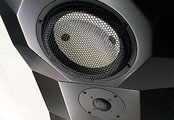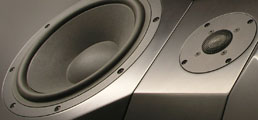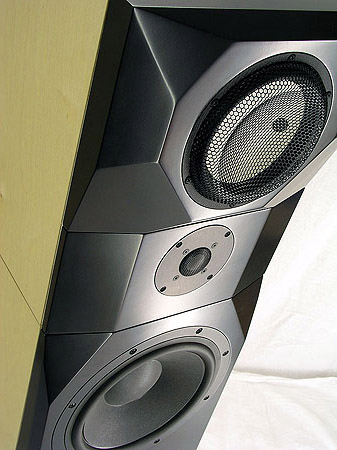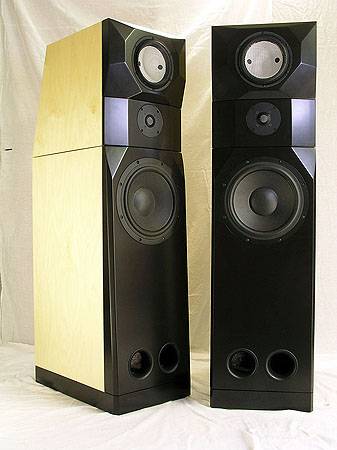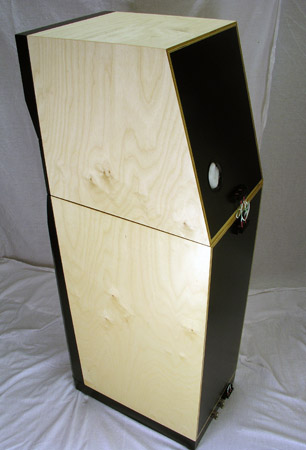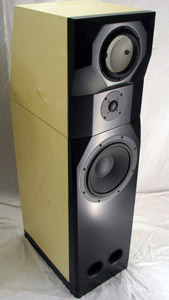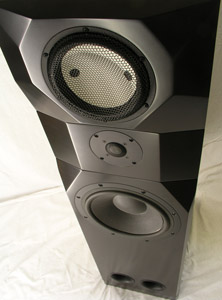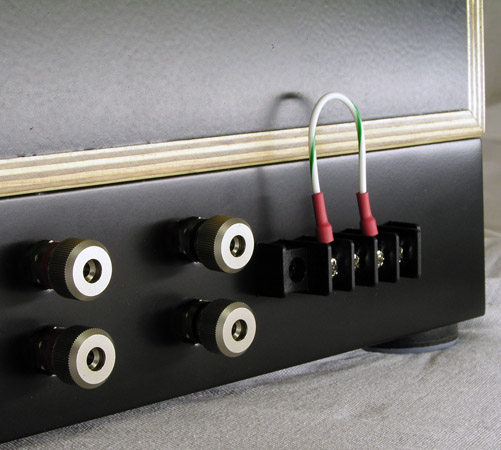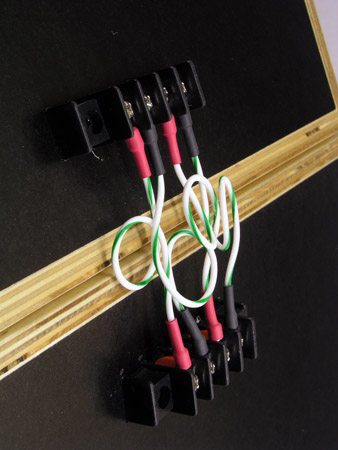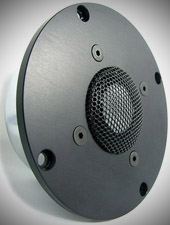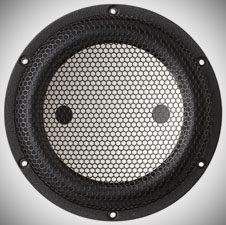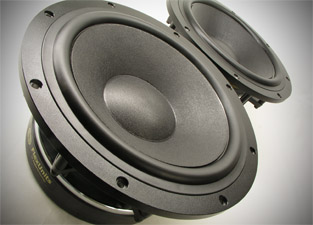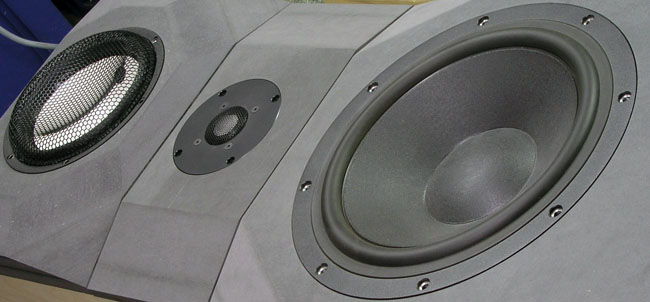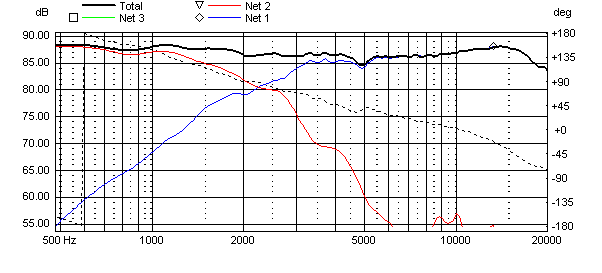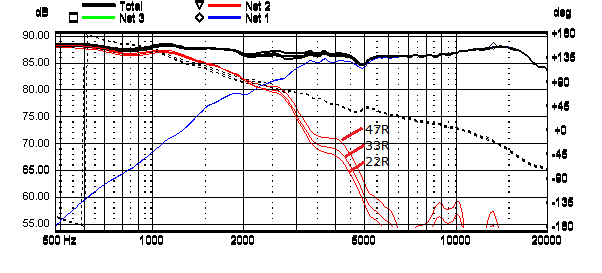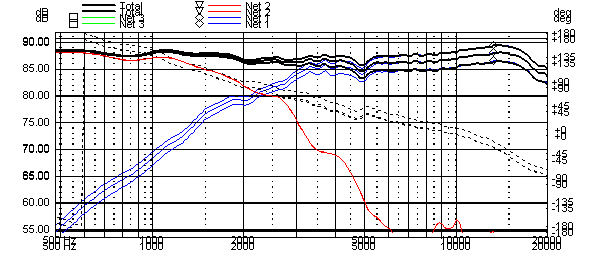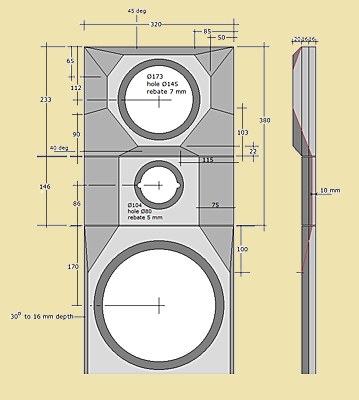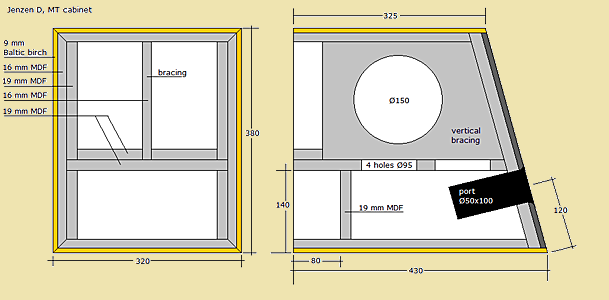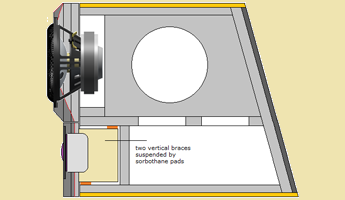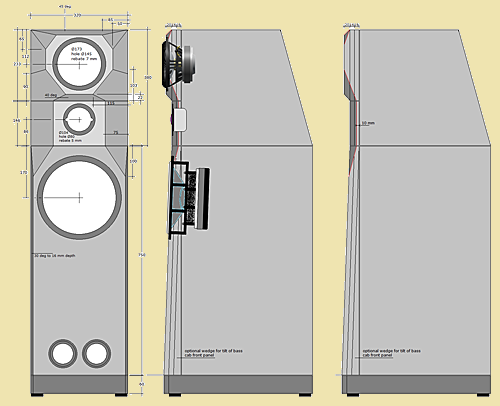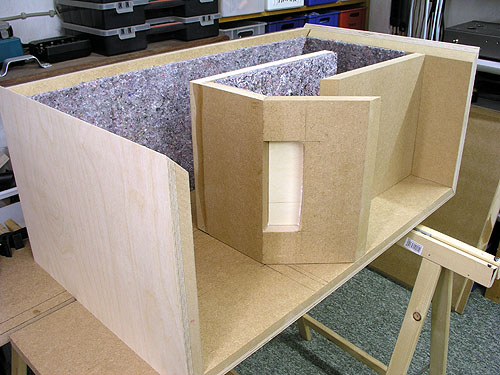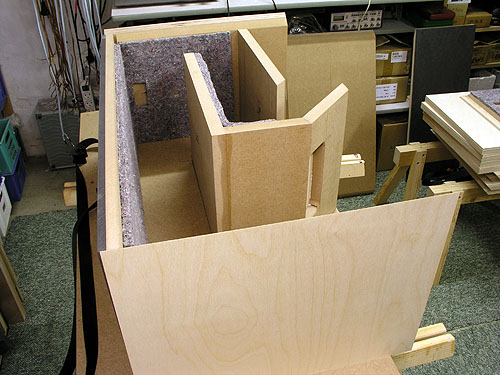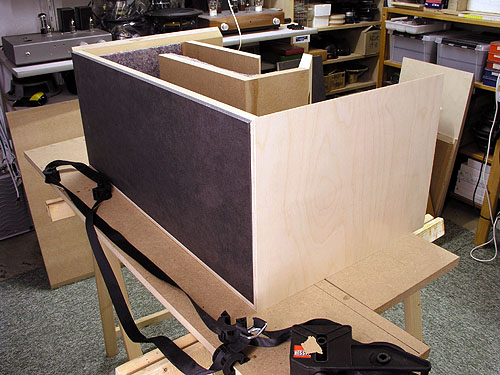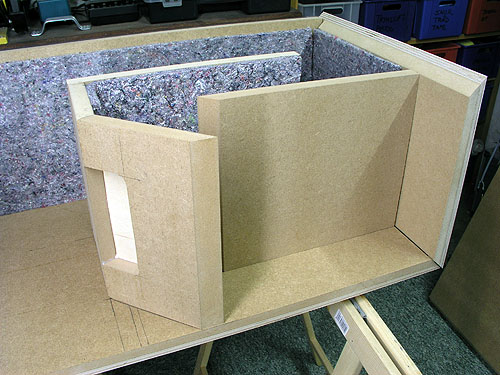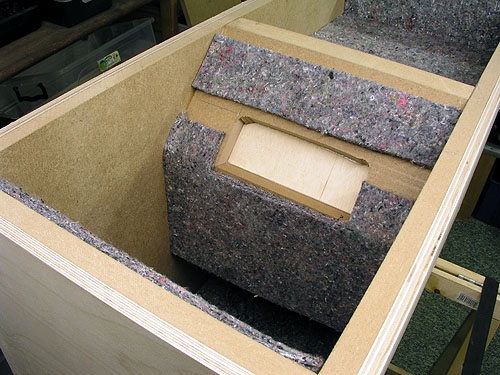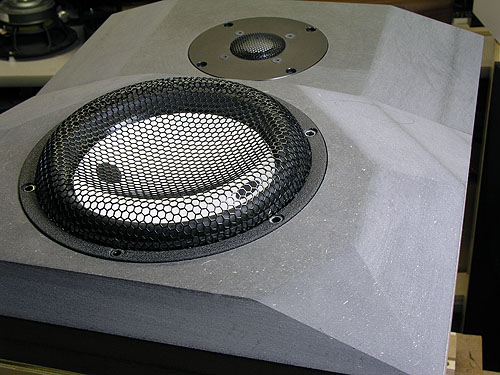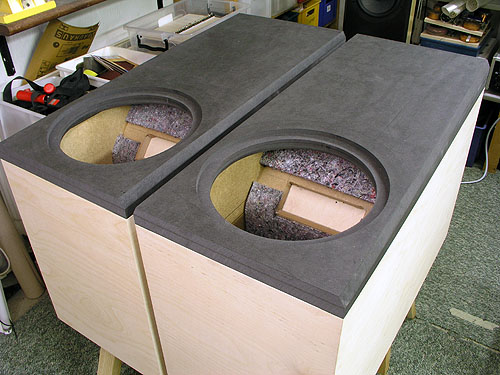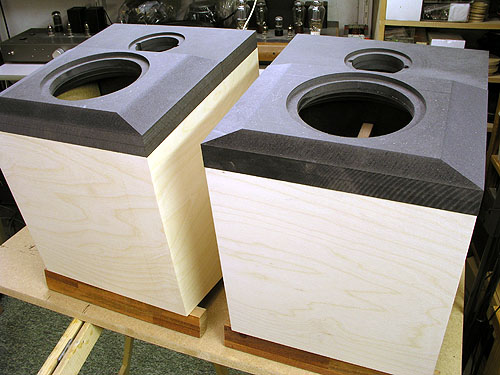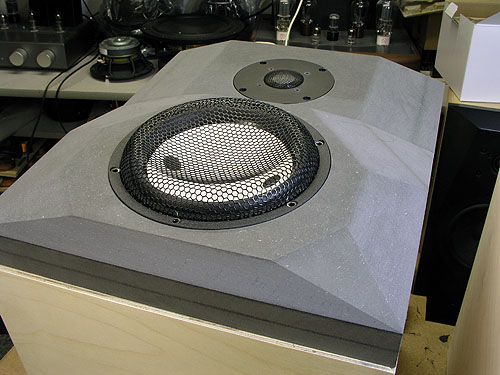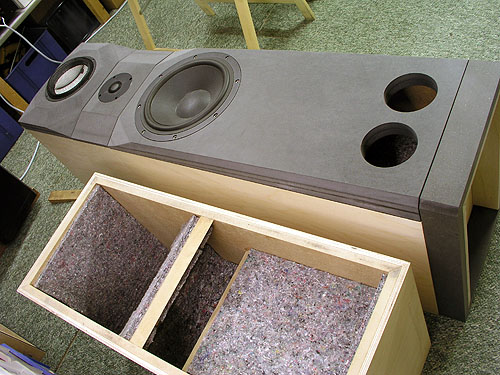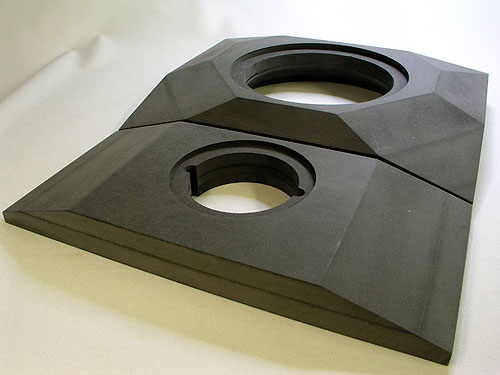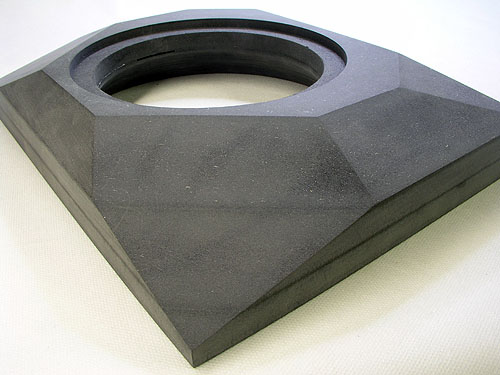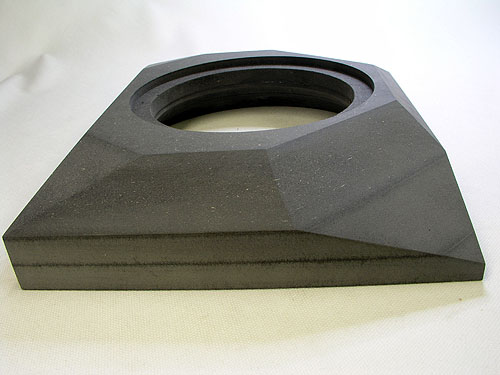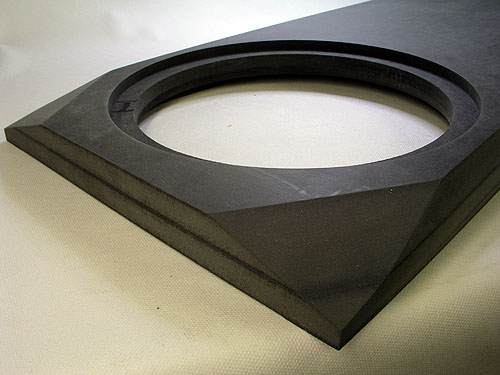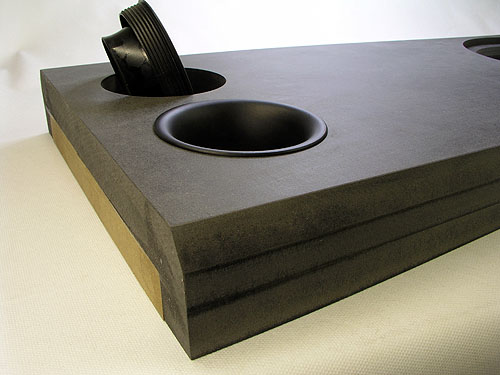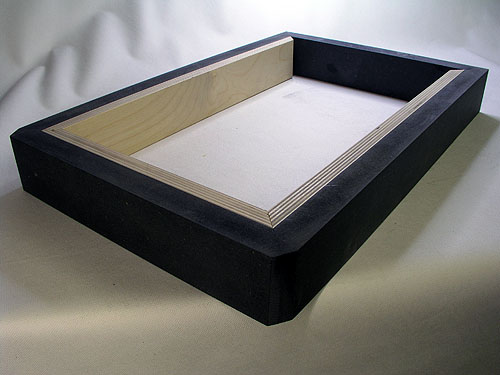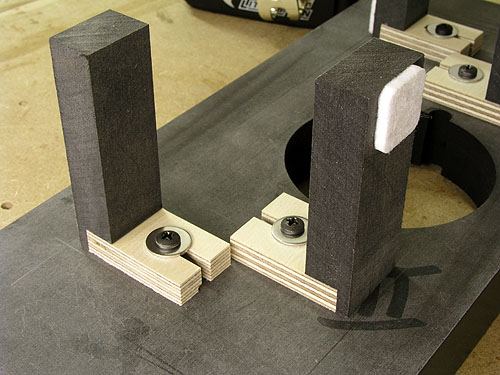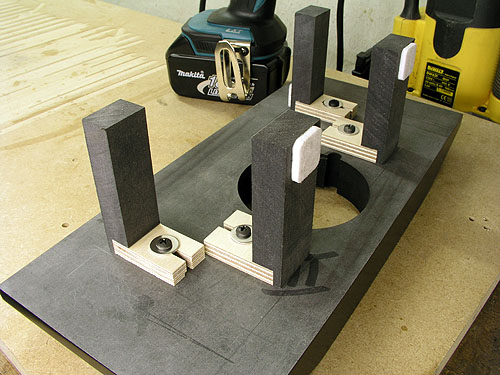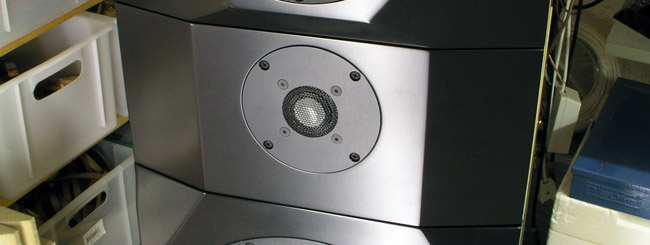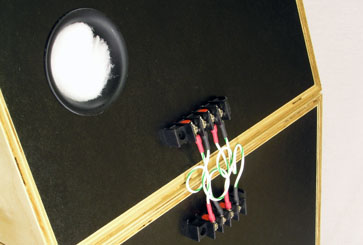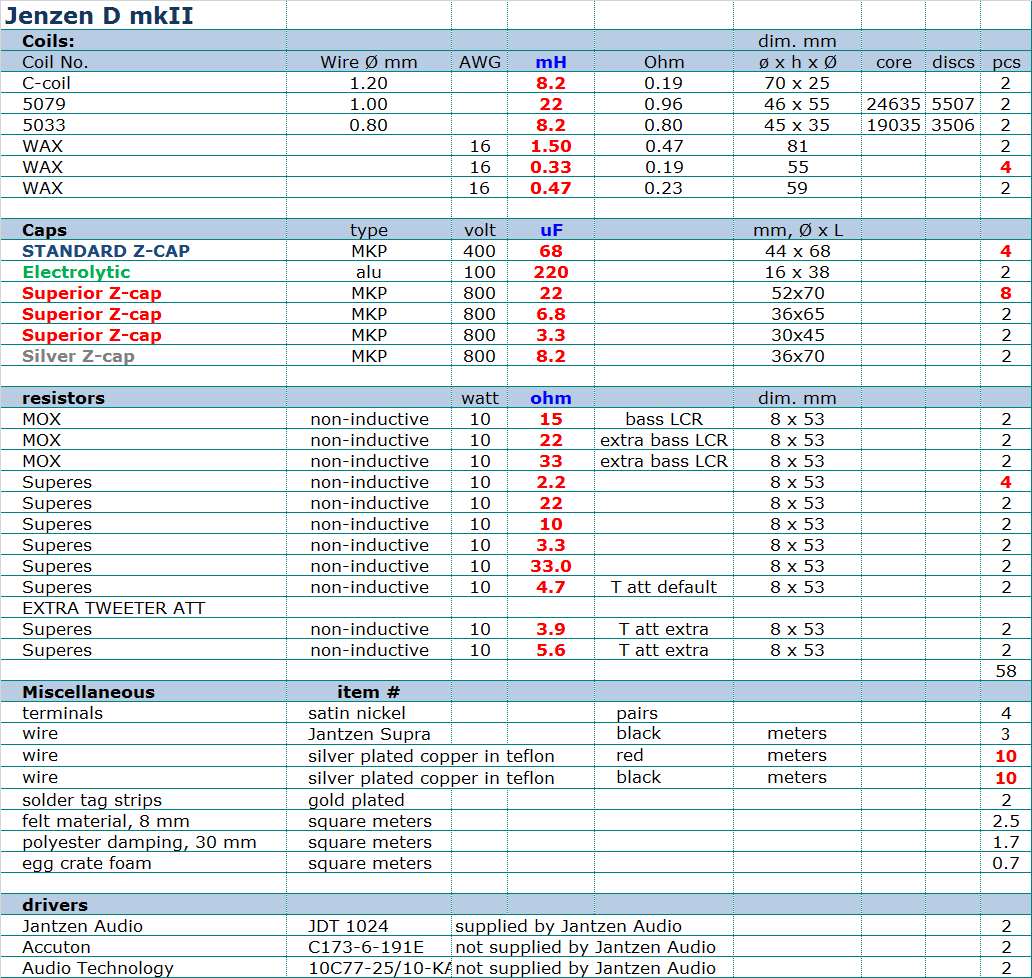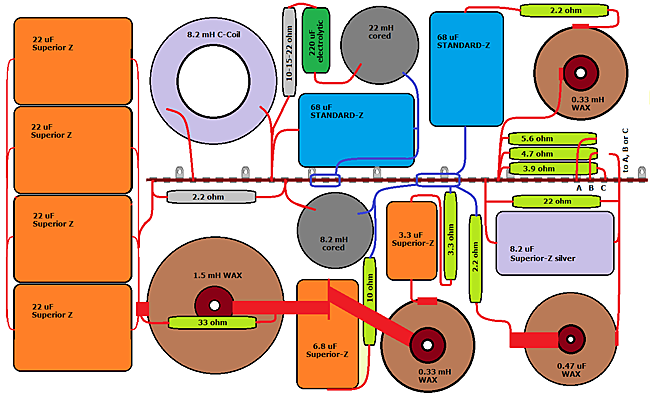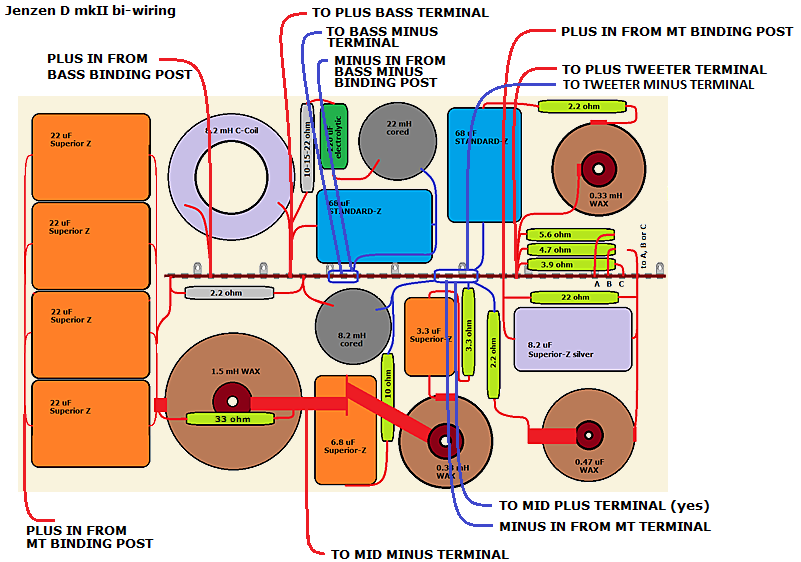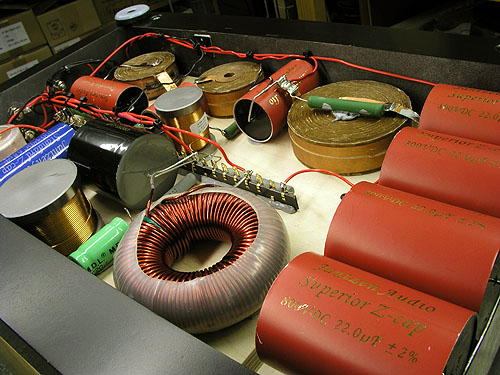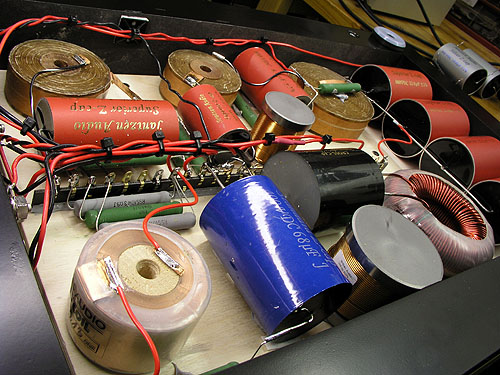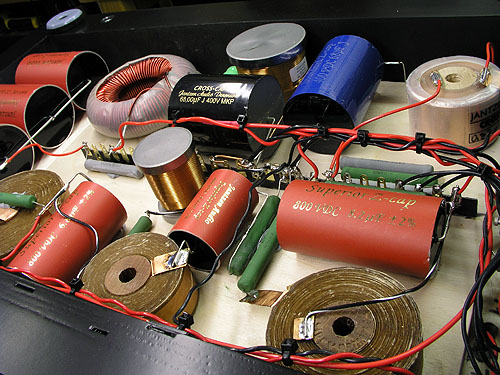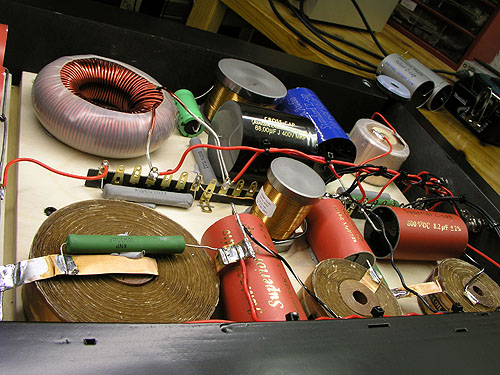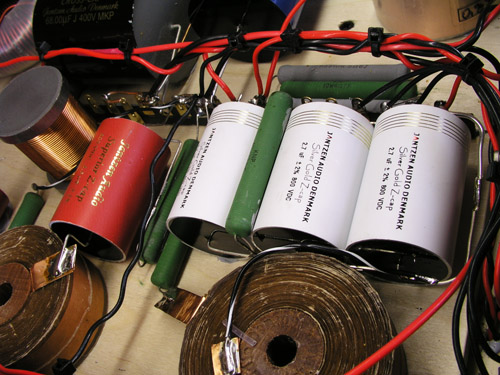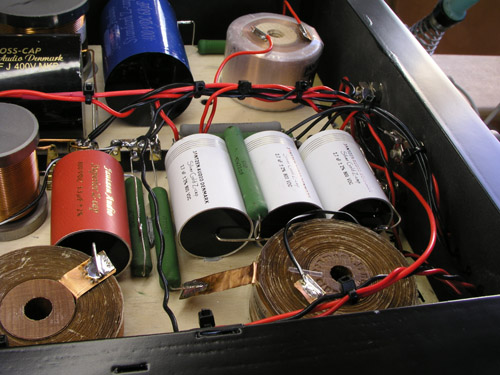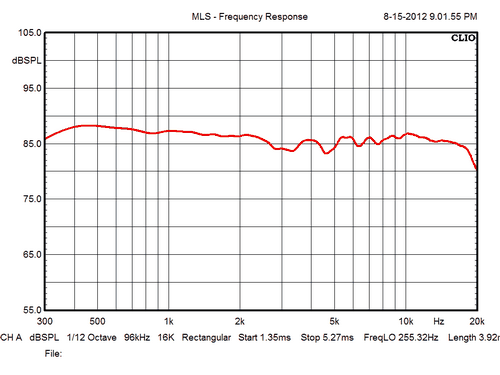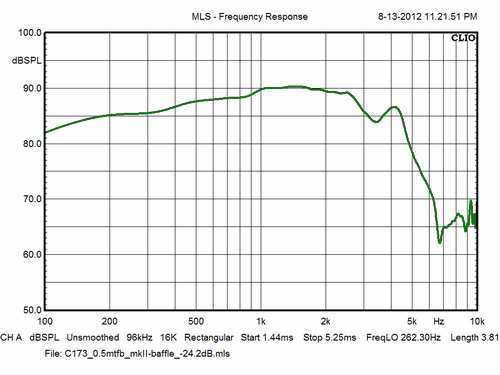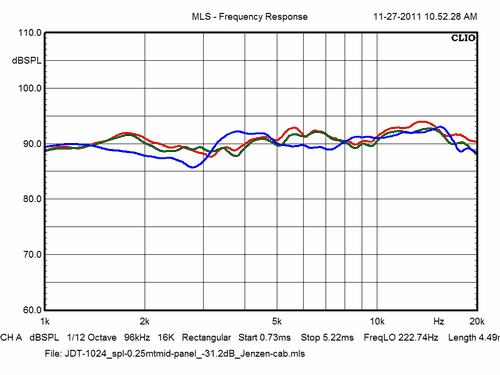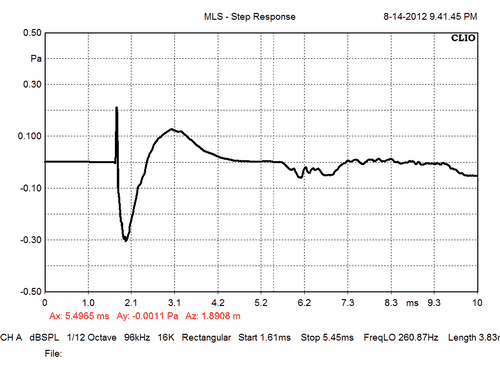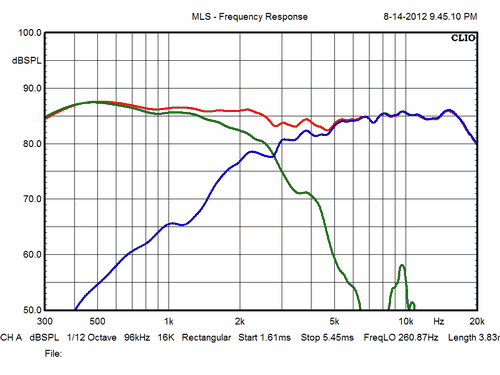|
Jenzen
Diamond mkII DISCONTINUED
DUE TO DIAMOND TWEETER OUT OF PRODUCTION
DRIVERS CABINET CROSSOVER CROSSOVER LAYOUT WIRING CROSSOVER KIT SOUND MEASUREMENTS Diamonds may not only be a "girl's best friend"; could be men's too. If we google "diamond tweeter domes" we find quite a few discussions amongst B&W owners up-grading their alu domes to diamonds. There seems to be consensus diamonds are better; maybe not surprising considering the extreme cost, but going from aluminum to diamond is quite a jump so maybe there's something to it. What I am certain about is that their alu domes and new diamonds will not perform exactly the same with regard to amplitude and phase and this alone will compromise comparison. But how about going from ceramics to diamonds? How does the Jantzen Audio JDT-1024 compare to the Accuton C30-6-024? Read below. Some basic info on diamonds for tweeter domes can be read here. Based on mail response, there may be some confusion on what treble really is. Obviously our definition of frequency ranges are arbitrary, but treble starts - per definition - at 1280 Hz, that is "lower treble". Mid-treble is 2560-5120 Hz and upper-treble 5120-10240 Hz. What's above is "top octave". So, in most 2-ways the midbass is often handling the lower treble area and sometime going into mid-treble too. Getting the upper-mid/lower-treble range right is to my experience of pivotal importance for making good sound. Lower treble is the area where many 6-8 inch drivers start beaming and where tweeter units have extreme dispersion, thus the variation in dispersion is often an issue in making a happy marriage of midbass and tweeter. 2 inch mid-domes or small 3-4" conventional drivers can sometimes be a good idea in bridging the gap in radiating diameters of 6-7" midbass drivers and 1" domes. Problem is complexity of crossover and added cost. SP44, SP38 and Ekta are examples of this approach. The domes presented here are roughly four times the price of the Accuton C30 and the obvious question is if they are worth the dough? It's a tough question because yes, they are better and even so by a comfortable margin. Whether they are worth the price is a futile question; like asking if a Ferrari or Rolex is worth the money. At a certain level of quality and sophistication price becomes irrelevant as the subjective appreciation of these qualities cannot be argued. Depositing carbon onto a silica substrate takes sophisticated machinery, skilled personnel - and it takes time. And I guess that when a batch of domes are made a certain number must be discarded due to variation in weight, etc., thus, diamond domes become expensive. Hopefully some day diamond domes can be made at affordable prices reaching current high-end domes because there are qualities to be had - and enjoyed. My first Jenzen cabs
ended up with the ScanSpeak
Illuminator drivers, so I had to make new cabs for my final Jenzen
D. It uses a slightly modified crossover compared to my first launch
due to an optimised front panel layout for the middriver and tweeter
dome. My intention with the modified front panels is optimisation of
working conditions for the tweeter stuck in between mid and bass with
a mid panel protruding some 20 mm in front of tweeter to time-align
the two drivers. The tweeter and bass panels have the same thickness
to reduce diffraction/reflection. Next
I made the MT cabinet vented and with a tilted rear panel making the
overall appearance less bulky. Click images above to view large.
JDT-1024 diamond tweeter Accuton 173-6-191E midrange driver AudioTechnology 10C77-2510-KAP How does this diamond
dome compare to the ceramic tweeter? Diamonds have the quality of
not really having a "character" - if you get my meaning.
Those selling diamond domes will tell us the are "silky" and
"smooth" because we like to read "silky" and
"smooth" and we want the things we buy to have some kind of
"quality". I first tried the
diamond domes with the ScanSpeak 18WU
drivers (same front plate diameter..) and got so exited I couldn't
wait implementing the diamonds in the Jenzen Accu speaker. In
replacing the Accuton C30 dome I tried to render a frequency response
as close as possible to the Accuton for the sake of comparison and
they're close enough to dare comparing. Properly implemented, diamonds
may urge you to go through countless LPs and CDs to hear what was
hidden before. Based on history we're programmed to be suspicious on
hard-domes for sounding - well, hard. The diamonds are neither hard
nor silky, they are a significant step towards more fidelity. Cymbals,
bells, triangles, btw, are a delight, and frankly, I never thought a
dome tweeter could make this much impact because I've tried a lot over
the years. It not only delivers effortless treble, it improves the
response from the midrange driver - or so it is felt as the midrange
is obviously doing the same as before, but the ear cannot for sure
determine where the transition is. If mid-tweeter integration ever
meant something, this is it. Another thing that was surprising was
listening a low levels. I thought the diamonds would fade turning down
the volume. Not so, clarity and transparency goes all the way down and
tells the story of generally low-loss drivers. The quality of the bass from the Audio Technology 10" sandwich bass driver in this transmission line cabinet is the best I've ever heard from a medium-sensitivity bass driver. Articulate, precise and responsive - and even so at low levels! I could go on, but before even finishing listening to more music, the inevitable question arise: What's next? You may object that this isn't the time to think "what's next" when what I have described sounds like aural nirvana! It is the best I've ever had in my room and it is going to be a reference speaker, but the Jenzen cabs are a bit too big for our living room. So, can all this be preserved in a smaller enclosure making less impact on room decor. Time will tell. I had a Jenzen Accu four-way on the drawing board with the Accuton 2" dome bridging the C173 and C30, but now I'm not so sure. The added cabinet and crossover complexity may not pay off - and I would get less of the diamonds having a point of crossover in the 4-5 kHz region. Right now I can't get enough of the diamonds and 2" Accuton diamonds are way out of reach. There's nothing like a new tool that allows you to learn new things and create new standards. All things written about the Jenzen Accus go for this speaker as well and I shall not repeat myself here. Please read the Accu file and find out what I mean.
There are only a few
changes to the crossover compared to first launch. Middriver's
notch-filter has been fine-tuned at little by the 0.33 mH coil.
Tweeter circuit is basically the same, only C1011 is reduced to 8.2 uF
and the notch filter has been further improved to provide a smooth
reponse roll-off towards lower frequences. Point of crossover has
moved up some 200-300 Hz, now around 2.5 kHz. For tweeter attenuation R1031 can take any value from 3R9 to 5R6. My
default is 4R7. It
depends on associated gear, listening distance, overall room acoustics
and not least taste. 3R9 gives tremendous detail but may turn harsh on
certain recordings. Don't forget the bass notch-filter. R3031 can be changed from 15
ohms to 33 ohms - or the circuit can be left out.
I hope this will also demonstrate that there is no such thing as a final crossover. When the basic crossover is in place, we can make numerous minor variations that do not impair overall performance but may alter tonal balance a little and fine-tune performance to improve synergy with our gear and create a better balance with given room acoustics. Click here to go to cabinet construction page for bass transmission line. Bass cabinet is identical to all other Jenzen construction except for panels made from 9 mm Baltic birch +16 mm standard MDF like the MT cabs. Rear panels were made from 10 mm black MDF + 16 mm standard MDF. Go to Jenzen construction page here for further details and damping instruction. Add 13 mm felt to all internal panels and fill lower compartment with acoustilux. I have two sheets, 10 x 25 cm, of 30 mm acoustilux behind middriver on each side of the vertical brace. Mid cabinet volume is around 22 litre and with the chosen port, Ø50 x 100 mm, we have Fb = 40 Hz. Just for those interested.
Two vertical braces are glued to the tweeter front panel on each side of the tweeter. Shock absorbing pads, Sorbothane, are added to suspend the front panel. Adjust size of braces and pads to your actual tweeter cavity. No dimensions will be given here. I bought some 1/8" (3.2 mm) Sorbotane sheets, Duro 30 and 50, and made pads from these.
CONSTRUCTION PICS
FRONT PANEL CLOSE-UPS
CROSSOVER
KIT INCL JDT 1024 DIAMOND TWEETER
Please contact Jantzen Audio for full quotation incl. shipping. Please state your address. Download sales presentation here:
PLEASE ALL TECHNICAL QUESTIONS AT: troels.gravesen@hotmail.com
The
Crossover Layout
CROSSOVER
WIRING
Crossover images
|

